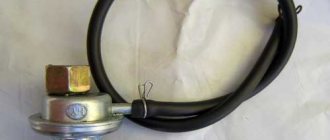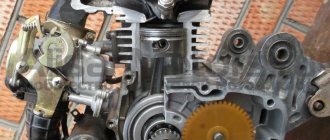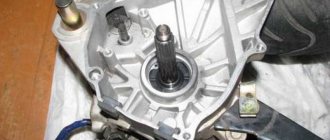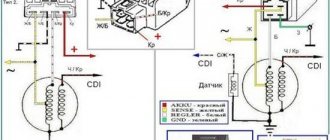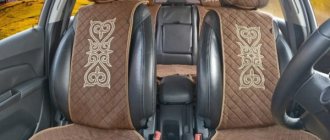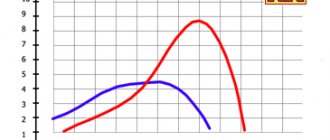Differences in tire types
The very first replacement of tires on a motorcycle or scooter gives reason to think - what is better in terms of quick repairs: tubeless tires that do not require disassembling the wheel to eliminate a puncture, but leave the rider helpless if, along with the damage, the edge of the disc “leads” and flattens? Or tubes that allow almost circular holes to be repaired (as long as there are enough patches), but require removal of the rubber from the rim for this? There is no clear answer. Few classics, street or tourers today remain “faithful” to tube rubber models: tubeless tires are lighter, softer, warm up and cool down faster due to simplified heat transfer. In sports, more precisely, enduro and motocross, tube wheels, on the contrary, prevail: only spoked wheels can “play”, withstanding strong alternating loads during landings and impacts.
The nuance is that a tire with a tube can be placed on any rim, spoked or cast, but a tubeless tire can only be placed on a cast rim, because only it can ensure tightness. Tube – can be installed in a tubeless tire as an emergency measure. In case of major damage to the sidewall, cracks or curvature of the edges of the rim, this will make it possible to inflate the wheel and make it to the nearest tire shop (and there will be straightening, balancing and other maintenance according to the rules). True, for such a trick it is advisable to take a camera with a nominal value one less than the diameter of the disk, otherwise it will create folds inside that will wear out over a couple of hundred kilometers. The resource of such “treatment” is large - until the next puncture, like a new one.
How to properly repair spoked wheels
In a spoked wheel, the rods themselves work during movement in the same way, both in compression and in tension.
That is why, for comfortable operation of the car, it is necessary to ensure the correct tension on the spokes, which is done in the following way:
- Spoke wheel repair - where to start? First of all, to straighten motorcycle rims, you need to ensure absolutely uniform tension on all the spokes so that a light blow on them produces the same melodic sound.
- When some knitting needle is a little longer than others, it needs to be tightened a little looser, and a shorter one needs to be tightened tighter. Thus, when the wheel rotates freely, the tension of absolutely each spoke is adjusted.
- If a small “figure eight” has formed on the wheel during a collision with an obstacle, then the spoked wheels can be repaired by simply tightening all the spokes in turn, but this only works when the wheel has undergone elastic deformation.
Spoke disc for the Urals
If a jam is found on the rim, or the general bend of the wheel is so strong that simple retensioning cannot correct it, then the wheel must be completely disassembled and stretched on the same cold stand, and then reassembled.
Important! The procedure for tensioning the spokes is not as simple as it might seem at first glance, because even half a millimeter of deviation can cause a defect in the product in the other direction.
I found a tire puncture on the road - what to do?
The extent of the damage determines whether you will be able to eliminate it yourself, or whether you will have to “surrender” to a motorcycle tow truck. In tubeless tires, holes up to 5–6 mm are patched, in tubes, as long as there is enough glue and patches, the main thing is the condition of the tire. To determine the scale of the disaster, find a place where you can safely stop without violating traffic rules (where this is prohibited, you will have to sacrifice tires and drive on).
If the tire deflates slowly, and the object that pierced it is still inside, you can try to carefully drive to the tire shop. A completely deflated pancake will have to be resuscitated on the spot, or the wheel must be removed and taken to a service center.
To find a hole in a tubeless tire, if it is very thin and not immediately visible, you need to inflate the wheel, slowly pouring water on it - bubbles will appear. In place, tubeless tubes can be “harnessed” or filled with sealant inside without removing them from the motorcycle.
With the second type of tires it is more difficult. A torn cylinder must be removed from the tire to detect the defect and seal it. In a good way, the wheel needs to be removed from the motorcycle and disassembled on a clean, flat, hard surface. Let’s say that such a “patch” can be provided even off-road, but how to remove a wheel on a motorcycle if it does not have a center stand? And it’s not necessary to take it off. The motor must be carefully placed on its side, after making sure that the tap is closed, gasoline does not flow out through the tank cap (antifreeze does not flow from the tank if the engine is “hydroxy”), and removing the plastic or case with fragile contents (if any).
You will have to unscrew the wheel from the motorcycle only if you need to replace the tire, or if you decide to patch the tubeless tube with a “fungus”. In the absence of a central stand, this will also have to be done on a lying bike, or - make this stand from scrap materials (bricks, stumps, car jack), placing them under the crankcase protection from below, the central pipe of the frame, the duplex jumper (but not under the plastic, itself engine crankcase or attachments!), under both footrests - if they are not folding, or - under the pendulum. Before removing the rear wheel on a motorcycle, the front fork must be loaded with something, or an even higher lining is made.
When to remove the rear wheel
It is unlikely that the idea of unscrewing the chassis from a bicycle frame will just come to mind, unless, of course, a person specializes in bicycle disassembly. But this is a completely different case. Rear wheel removal will be required if the following problems occur:
- noticeable damage to the rim;
- complete wear when the wheel needs to be replaced;
- the tube has gone flat or the tire has burst;
- bushing bulkhead.
This includes the planned replacement of the rear sprocket system and chain.
Before removal, the bike must be turned over and installed on the saddle and handlebars. It is better to remove canopies in the form of a mirror, a bell and a lantern in advance so as not to damage them under the weight of the frame. V-brake brakes are first released and removed, otherwise they will not allow the wheel to be pulled out freely. With disc models everything is simpler - you can immediately remove the wheel.
It must be said that the removal process itself consists only of unscrewing the eccentric or unscrewing the fastening nuts from the bushing axis, depending on what it is. If the mount is an eccentric, simply unscrew the handles and twist the wheel. The nut is loosened with one or two keys.
Usually one wrench of the appropriate size is enough, which is used to remove the nuts one by one. If the bushing axle rotates, then the nuts unscrew simultaneously in different directions. It is recommended to use open-end or box-end wrenches. The adjustable version is undesirable, since its thick horns “eat up” the corners of the nut due to loose fit and sliding.
Tubeless tire repair
In a motorcycle tire shop, tubeless tires are repaired using the cold vulcanization method. They are removed, beaded, the puncture site is cleaned from the inside, degreased, lubricated with glue and a calibrated “fungus” patch is inserted into the hole from the inside. The fungus itself is a thin piece of rubber with a tube “leg” in the center. The leg is pulled through the hole of the damage by the guide wire, and the “hat” seals it.
After half an hour, you can put the tire back on. The reliability of such repairs is high, the patch does not cause a significant imbalance, and the service life of the sealed motorcycle tire does not decrease.
This method can also be applied on the road, the main thing is to have the necessary equipment and materials with you:
- Keys for removing the front or rear wheel.
- Compressor (or CO2 cylinder), pressure gauge.
- Fungi, activator glue, pliers, cutter (knife).
- Sandpaper, or file scraper, degreaser.
The fungal repair procedure does not require much experience. The main thing is to keep it clean, thoroughly clean the area where the patch is attached, let the glue dry slightly until matte and properly press (roll) the surface of the fungus, expelling all the air between the layers. If necessary, you can degrease the area before gluing with gasoline, but without the rest of the above, it will not be possible to carry out a full repair.
The compressor is sometimes replaced with a small cylinder of compressed air or carbon dioxide. Unlike a mechanical pump, it will immediately create a “surge” of pressure, pressing the tire beads to the edges of the rim (in emergency cases, even a fire extinguisher was used to pump up flat tubeless tires). When connecting the compressor, start the bike's engine before you start inflating the tire - let it idle. Otherwise, the motor may drain the battery and you will not start.
Pressure gauge - needed for control. It is not advisable to overinflate a repaired tire. It is recommended to “inflate” 0.2 atmospheres less than the nominal value. Inflating too little is also bad: a deflated tire has a larger contact patch with the road, so the area of the fresh patch will be more deformed.
Wheel assembly
Before installation, determine the direction of rotation of the tire - there is a special arrow on the left or right side. If it is missing, installation can be done in any direction. Place as much of the tire on the rim as you can. Only then take hold of the screwdrivers or mounting brackets. Manufacturers recommend pumping the rear tire up to 2.5 kg/cm2. If you have a tubeless tube, the pressure increases to 3.5. Excessive pressure is only required at the initial stage so that the sidewalls are firmly seated in the rim. Then reduce the pressure to the manufacturer's recommended pressure.
Wheel trim (video)
So, now the question of how to disassemble a wheel on a scooter will not take you by surprise, since the process of removal and installation is simple, but the prerequisite is the use of tools and adherence to the correct technology.
Other on-site repair options
“Twisting” a tubeless tube and sealing its internal cavity through a nipple are quick, simple methods that do not require special skills. To repair the damage, you only need the materials themselves and what to inflate the wheel with.
Filling with sealant
Now in Moscow, and not only, 6-5 varieties of cans of sealant are sold - quickly hardening “liquid rubber”, with a volume of 800 to 250 ml.
It’s easy to use “Anti-puncture”: you need to put a tube with a fitting on the nipple of the camera, turn the can over, and hold the button according to the instructions. Then, inflate the wheel, clear the nipple of foam, and roll it, making a full revolution to distribute it.
The sealant is blown out along with air into the puncture hole and clogs it, hardening. In 20 minutes you can go. Repair reliability is high. Resource - until the next puncture.
Harnessing
If you have a compressor, start pumping up the tire right away, this will make it easier to work with the puncture, insert the patch, and it will swell faster.
Procedure:
- Having found the place of the breakdown, you need to clean it with an awl, widening the edges and making them rough. Screw the awl in several times along the thread and pull it out straight. For the last time, pre-lubricate it with glue and leave it inside the tire while you prepare the patch.
- Insert the flagellum into the hole of the needle (fork) to the middle. Fold it in half and apply glue generously.
- Pull out the awl and immediately insert the needle with the patch so that the ends of the “tendrils” of the tourniquet still peek out a centimeter and a half.
- Turn the needle handle a quarter turn and pull it out, leaving the tourniquet inside.
- Wait until the glue on the outside dries (2-3 minutes), cut off the edges of the flagellum cleanly. Inflate the wheel completely.
You can drive in just 5 minutes, you just need to make sure that there are no descents anywhere else.
Externally identical, repair kits for wheel harnesses can vary in price by almost half. This variation is explained by different configurations - one will have only three items, the other - six or seven.
A complete kit for repairing tubeless tires contains:
- Strips of raw rubber (“flagella”) 3-6 pcs.
- An awl with a T-shaped handle and an abrasive foot.
- A fork (needle) for installing the flagellum.
- Glue activator.
- Cutter for removing patch remnants.
Regardless of the cost, you need to choose a kit in which the harnesses will be reinforced, and the awl will have a deep spiral winding (notch), and not a “needle file.” Sometimes it is easier to insert the “flagellum” with a regular thin screwdriver. If there is no glue included, or it has dried, the flagellum is moistened with gasoline.
Tire classification
There is also a classification of tires into classes and design. Regarding the latter, tires can be tubed or tubeless. Each class has its own pros and cons. According to experienced scooter riders, tubeless tires are better and more reliable, since in case of a puncture, which happens unexpectedly and is dangerous at high speeds, they are able to hold air for some time, which allows them to get to a service station to replace the damaged wheel. However, tubeless tires require special rims, which involve additional expenses.
In short, replacing a tire is the most common and common reason that requires removing a wheel on a scooter. By and large, there is nothing complicated in this process if you have the necessary tools at hand, a little perseverance and patience, and also know the sequence of actions that need to be performed.
Table. Correspondence to motorcycle tire sizes and decoding of abbreviations.
Sealing a tire with a tube - repairing spoked wheels
At motorcycle service stations and auto repair shops, holes in the inner tubes are sealed using the hot vulcanization method: a layer of raw rubber is applied to the cleaned, grease-free puncture site and, after squeezing well, it is heated with a special “iron.” The iron burns, the layers are fused into a single whole. Repair reliability is high. The resource will be almost like new.
Cold vulcanization (gluing with a patch) - used if the workshop is not equipped with a vulcanizer. In this case, the quality of the service and the reliability of the repair will depend on the accuracy of the technician. For ease of sealing, the service center removes the camera completely, but, I repeat, this is not necessary. It can be repaired on site in exactly the same way (there are no other options except replacing the camera), but without removing it from the motorcycle.
This can only be done if you have two metal mounting blades. At least one, the second can be replaced with another flat tool. You can also disassemble the wheel with a wide screwdriver and a “family” wrench wrapped in electrical tape. But this is only as a last resort, otherwise you may damage the cord.
Sequence of work:
- Place the motor with all precautions.
- Press the beads of the flat tire from the rim with your foot (stomp on it).
- Insert one mounting blade between the bead and the rim.
- Press the paddle, moving its handle away from the tire - towards the center of the wheel.
- Use a second spatula to pry up the flange that has come out and leave it there.
- Insert the first blade nearby and slowly move it forward, separating the disc and the rubber.
- After freeing the tire, remove the deflated tube from it. Lightly inflate and find the puncture site.
- Clean it, degrease it, lubricate it with glue. Let the glue dry for a minute.
- Peel the patch from the shell, apply it to the glue, squeeze it (you can step on it with your foot), or roll it with a hard roller.
- Wait 2-3 minutes, pump up the chamber to check whether it poisons or not.
- If everything is fine, completely deflate the air, fill the balloon inside, moving it away from the edges of the disk, and pump it up a little again (important).
- Place one mounting blade between the bead and the metal and “throw” the edge of the tire back into place. Leave it as a fixative. The second is to pick up the next fragment of the side and throw it over. Continue until there are 10–15 cm of edge left to tuck. Remove the first assembly and “wrap” the rest - entirely at one time.
- Inflate the tire to check.
The trim must be done twice as carefully and slowly as disassembly, lubricate the edge with water or soap, and “help” more with your hands, otherwise there is a risk of catching the edge of the chamber with a spatula and tearing it.
Important! If the motorcycle wheels are equipped with towbars, before pressing the tire bead off the rim, you need to loosen the towbar! But do not unscrew the nut completely, do not completely disassemble it.
A standard “first aid kit” (a kit for repairing classic motor tires) contains only patches and glue, so it is advisable to supplement it yourself with a piece of “skin” or a needle file. You can degrease it with gasoline, or first apply a little glue and immediately wipe it off, rolling up the dust with it.
Wheel functions
The wheels of a vehicle play a very important role in safe movement, especially when it comes to any two-wheeled motor vehicles, in particular scooters. After all, worn out tire tread, deviation of tire pressure readings from the norm, as well as any other more serious malfunctions can lead to serious consequences that sometimes cost a human life. Therefore, wheels should be given no less close attention than all other components and assemblies of the scooter.
Scooter wheels must perform the following functions:
- ensuring good grip between the vehicle and the road surface;
- dampen shocks and vibrations while driving;
- carry out full transmission of traction and braking forces created by the scooter.
When we talk about wheels, we mean absolutely all their components and characteristics - tires, wheels, size, type, material of manufacture, etc.
First of all, I would like to say about tires, on which many scooter riders, especially beginners, often try to save money. In this regard, used tires are purchased, which can result in troubles on the road. It is worth noting once again that good tires are one of the fundamental aspects of safe driving.
The tire provides a level of riding comfort as well as maneuverability of the scooter. Thus, used tires can cause accidents, which will entail much higher costs than purchasing new tires in the first place. In appearance, used tires may be ideal, however, this is not a sign of its integrity and quality, since the naked eye can easily not notice minor damage, cord deformation, microcracks in the rubber that violate the tightness of the product.
All this can lead to an unexpected tire rupture while driving, which entails negative consequences. Thus, the real savings when purchasing tires can be achieved by brand. After all, the more famous the company that produces tires, the more expensive they are.
Repairing motorcycle wheels yourself and at a service center - what's the difference?
Nowadays there is no shortage of specialized motorcycle repair shops not only in Moscow - in all major cities there are motorcycle helpers who help motorcyclists directly on the track, or tow them to where they can quickly replace the tube, or patch the tubeless tube correctly, so that no trace remains. Where they give a guarantee.
Changing a tire on a motorcycle yourself requires a certain physical condition, and for the first time - “a kilometer of nerves.” At the service station, instead of you, the automation will “sweat”, which will not clog the side and will not scratch the coating of the disk with a spatula. The main thing is that he will do it quickly (if you need to go urgently, the price sometimes does not matter).
Repair at a service center may be the only option if, due to driving on a flat tire, the tire nipple has turned and torn off. Moreover, if it flew off and got lost, and there is no spare one. In a motorcycle tire shop there is always a set of consumables for any wheel diameter. There, as a last resort, you can buy a new tire or a used tire.
In addition to the patch, for normal operation of the wheel it is necessary to ensure balancing. This is generally a useful procedure during any tire change, otherwise if there is a strong imbalance, the wheel bearing will inevitably break due to vibrations, and the hands will quickly get tired and “hum” after long rides.
When to change a tire on a scooter
- The tread height is less than the stated minimum standards for motorcycles and mopeds (usually 0.8 mm according to traffic regulations, but may vary depending on the country). Tread depth is measured using a caliper or depth gauge in the area most susceptible to wear.
- The tire has mechanical damage that compromises its integrity.
- The tire has cracks that appeared from “old age”.
- The tubeless tube has numerous punctures and allows “laces” to repair punctures.
- Various swellings and bumps that appeared during operation due to the supply of excessive pressure (remember that tires can be inflated at a nominal pressure of no more than 2 Atm.). Bumps can also appear as a result of a blow.
- Other damage.
All this obliges you to promptly take care of purchasing new tires, dismantling the old one and correctly installing the new tire. Let's look at how to do this correctly.
How to ride a motorcycle with repaired tires
For the first couple of tens of kilometers, don’t drive, go at the speed of the flow. Stop and check if the tire is flat. If the patching is not done well, it will show up almost immediately. The parking lot will tell you about the long term: if in the first day or two the cylinder has not lost its volume, then everything is in order, you can drive as before.
Knowing what to do if a tire goes flat on the road is important not only “for yourself.” Helping a beginner or a fragile girl means earning an important “plus in karma”, which will later return at the right moment. But I hope this knowledge will be useful to you only in theory. Good luck to everyone on the roads, no nails, no rods!
Scooter wheels
When driving a vehicle, special attention is paid to the safety of absolutely all road users. Achieving maximum safety during a vehicle is possible only with an integrated approach, which includes knowledge and compliance with traffic rules, as well as the complete serviceability of absolutely all components and mechanisms of the vehicle.
Running in new tires
From the factory, modern motorcycle tires are coated with a preservative silicone impregnation that prevents drying out during storage. It is slippery and penetrates deep into the pores of the rubber. Until you rub it off on the asphalt, don’t count on good “grip” and “sharp” brakes. There is no need to wash off the lubricant with gasoline or other solvent (it is useless), just ride slowly for the first couple of hundred kilometers. By the way, after long-term storage of used road tires, it is also recommended to “break in” them in order to remove the layer of roughened material from the surface.
Replacing a Motorcycle Tire: Installing a New Tire
Spray the lubricant and be sure to check the rotation direction of the tire and the rotation orientation on the rim. We don't want you to do the same job twice. Press the first sidewall over the edge of the rim and grab the tire irons.
Take a small section and use the lever to move the second sidewall towards the rim. You won't be able to do this in one go. Do this action slowly and wisely. Also, plenty of lubricant will help you, so keep spraying it after every two areas. Finally, align the balance point with the valve nipple on the rim, this will help you balance the wheel.
Install the tire bead by inflating the tire, or at a gas station using an air compressor or a flat tire inflator that is connected to your vehicle's power supply. Warning: When the tire bead is seated, it is very noisy and can pinch any foreign objects near it.
Keep loose wrenches, fingers or toes away from the rim. Don't be the person who learns this lesson the hard way.
Then check to see if the tire is sealed. Spray the water/detergent mixture along the edge of the rim and tire and watch for bubbles. If you don't see any, inflate the tire to the correct psi and install the wheel back on the motorcycle.
You change the tire yourself, so you are responsible for tire disposal. Don't throw it in the trash; Go to your nearest recycling center and dispose of your tires properly. If you don't have a tire iron kit, you can always replace a motorcycle tire using zip ties.
Components of a motorcycle tire and their functions
Motor tires are designed for high lateral loads. Its profile – even for the widest models – is more rounded than that of a car, consists of a working part, responsible for traction, and a side part, which “works” only when leaning in a turn. Parts not in contact with asphalt are also very important. It depends on them how much the tire will weigh, how much it will wear out under the weight of the bike, and how long it will last.
Cord (reinforcing frame)
The hidden part between the inner and outer layers of rubber, which gives rigidity and takes on the load. The structure of the cord is multilayer. Steel wire, or threads made of polyamide, aramid fibers (Kevlar), or polyamide are arranged in dense rows either across the tire, or intersect at an angle of 30–40 degrees in the direction of its rotation.
Sides (edges)
The edge of the tire extending inward into the grooves of the edges of the wheel rim, having an annular metal (internal) reinforcement. The lifespan of a motorcycle tire, and sometimes a motorcycle with a driver, depends on the reliability of its fixation in the rim.
Tread
The working part is covered with an intricate pattern, the size, shape and depth of the grooves of which depend on the purpose of the product. A larger, higher tread is typical for off-road and cross-country tires, while a lower, smooth one is typical for road and racing tires.
Side part
A zone connecting the tread and the edge, not inferior to them in strength, but not working with either the road surface or the rim. It is on this that “letters” are applied, revealing the properties and characteristics of the tire.
About tire pressure
It is important to remember that there are no specific tire pressure standards. It is better to follow the manufacturer's recommendations for each specific scooter model. In the cold season and if there is ice on the road, the tire pressure should be reduced, but in no case should it be increased above the recommended values.
Is it possible to install tubeless tires on a spoked motorcycle wheel by simply sticking a regular tube inside? Yes, easily! Now I will just install tubeless tires with cameras on my motorcycle.
Also, many manufacturers claim that tubeless tires have a reinforced cord. I don’t see anything bad if we ride a motorcycle with tubes in the tires, and even with a reinforced cord

